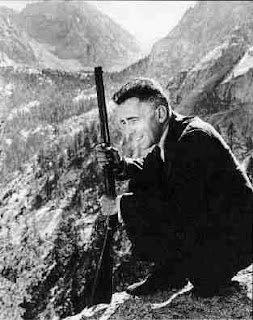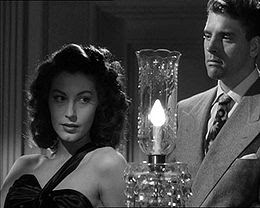Many times I've come across Mark Hellinger since becoming a film fan. My sense was that he was a New York character in the vein of Weegee or Walter Winchell, but I really didn't know much about him. I knew the movies he produced. I even knew the sound of his voice from the staccato narration of the 1947 film The Naked City.
I had to find out more, and as often happens, I did.
Mark Hellinger was born into an Orthodox Jewish family in 1903, but later became a non practicing Jew. Always drawn to journalism he started on the city desk at the New York Daily News in 1923. By 1925, he had his own column and specialized in news and Broadway gossip. He hobnobbed with figures like Flo Ziefeld, Walter Winchell, and crime figures like Dutch Schultz and Legs Diamond.
By 1937, he was a syndicated columnist in 174 newspapers nationwide. Also that year he was hired by Jack Warner as a writer/producer and provided the story for the 1939 James Cagney/Raoul Walsh gangster film The Roaring Twenties based in his own experiences.
In his onscreen foreword to the film, he wrote,
"It may come to pass that, at some distant date, we will be confronted with another period similar to the one depicted in this photo play. If that happens, I pray that the events, as dramatized here, will be remembered. In this film, the characters are composites of people I knew, and the situations are those that actually occurred. Bitter or sweet, most memories become precious as the years move on. This film is a memory - and I am grateful for it."
Hellinger produced several pictures for Warner Bros, each bearing his indelible stamp of romantic realism. These include They Drive By Night (1940), High Sierra (1941), and Manpower (1941).
With the start of WWII, movies became irrelevant to Hellinger and he was aching to get into the fight. He was repeatedly rejected from military service due to a heart condition. One doctor told Hellinger that he was not in good enough shape to receive the medical vaccinations needed to travel overseas.
In 1945, he set up shop as an independent producer at Universal. He bought Hemingway's short story 'The Killers' only because he couldn't afford to buy one of the author's books. He cast a former circus acrobat in the leading role after his wife, Gladys looked at a screen test and thought 'Isn't he handsome!'. After Hellinger watched the first dailies with Burt Lancaster, he hollered 'So help me, may all my actors be acrobats!'.
The Killers (1947) was a confirmed hit. It assured Hellinger's reputation as a great filmmaker and made every actor in it, including Lancaster and a young Ava Gardner, a star.
The prison film, Brute Force (1947) was the follow up and featured Burt Lancaster as an inmate and Hume Cronyn as the sadistic captain of the guard. Directed by Jules Dassin, it's described as a 'jolt of post war nihilism with a punch to the gut'.
His next Film 'The Naked City' captured all that Hellinger loved about New York City. Shot on location by Jules Dassin, the film was written by Marvin Wald, who 'prowled autopsy suites and police interrogation rooms to attain the realism that Hellinger wanted'.
The film was a smash and later inspired a long running tv series. More of a police procedural than a film noir it did win Oscars for cinematography and editing.
I'd say the film does have a certain left of center point of view. The New York depicted is a city of working people who have jobs in offices or factories, and commute on crowded subways. The heroes are non glamorous police detectives who labor at boring surveillance and live in Queens. It's much different than the view of NYC peddled by movies today.
Key people involved with the film were later black listed as the result of the HUAC hearings into Hollywood. These include screen writer Malvin Wald and director Jules Dassin.
While observing the classic chase sequence over the Willamsburg Bridge, Hellinger suffered a heart attack and was confined to an oxygen tent in his hotel suite. His bad heart and endless intake of brandy and cigarettes had done it's work. He died on December 21, 1947.

'Mark Hellinger was populist storyteller in print and later on film who pursued the essence of dramatic realism. his innate sense of public taste and sensibilities during the immediate post war era remain unparalleled'.
In January 1949, the 51st Street Theater in Manhattan was renamed the Mark Hellinger Theater in his honor. The original production of 'My Fair Lady' ran there from 1956 - 1962. In 1989 the venue was converted into the Times Square Church.
Thanks to Alan Rode for his wonderful biography on Hellinger.








Thanks for this post. It makes we want to see Naked City.
ReplyDelete